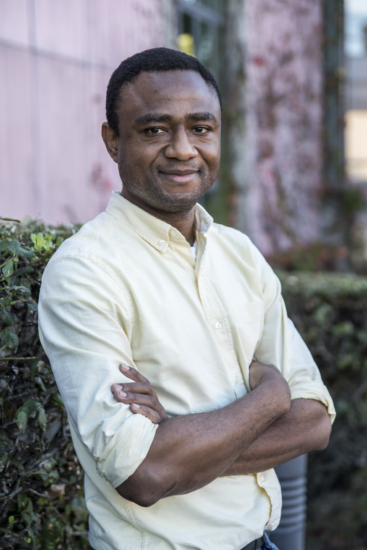 Sol Omolayo joined the ALS about a year ago and has been enjoying the challenge of being part of the design team for the ALS Upgrade project, ALS-U, as well as applying his vacuum engineering expertise to current ALS operations.
Sol Omolayo joined the ALS about a year ago and has been enjoying the challenge of being part of the design team for the ALS Upgrade project, ALS-U, as well as applying his vacuum engineering expertise to current ALS operations.
How did you end up at the ALS?
I moved here from the UK, where I had been at the Joint European Torus (JET), a fusion energy lab in Oxfordshire. Prior to that I had worked at Diamond Light Source for six years doing vacuum engineering and beamline design. As an engineer, one thing I’ve always wanted is to be involved in the design phase of a big new machine. When this opportunity came along at the ALS, with ALS-U on the horizon, it was a given that I’d take the position.
What have you enjoyed about being at the ALS thus far?
I’ve really enjoyed the caliber of individuals I’m working with—the scientists, the accelerator physicists, and engineers. The ALS fosters a very high level of scientific research. Having the free rein to pursue interesting avenues to solve problems both on the operational side and from the design side is pretty exciting.
What has been your main focus since you’ve arrived at the ALS?
Most of my time has been spent on the vacuum design for the upgraded ALS. As part of that, there’s been quite a lot of R&D effort on the way to develop one of the key enabling technologies for the upgrade—non-evaporable getter (NEG) coating. The vacuum chambers for the upgraded ALS will have very small apertures compared to the existing ALS vacuum chambers, which are five or six times bigger. Vacuum pumping for small apertures is very challenging, but with NEG coating the coating itself is a pump, so it basically delivers the pump right where you need it. The rest of my time is spent supporting ALS operations, which has been exciting as well—there have been a lot of opportunities to bring my knowledge from other synchrotrons here to help our scientists.
How did you end up in this field?
A common joke in the vacuum industry is that no one ever studies to become a vacuum engineer, but rather that you get “sucked” into it. It’s actually true for me—at college I studied electronic engineering and had the opportunity to work with vacuum systems. After college I continued in the field as a vacuum process engineer at Seagate. When I moved on to Diamond Light Source, I had my first experience of vacuum engineering as a field of expertise. I was drawn in. For most scientific endeavors, from microscopy to spectroscopy to astronomy, vacuum has become a key enabling technology. A lot of science has to go through vacuum, and it’s a nice juncture to be in as a vacuum engineer—seeing the amazing science that my work can enable.
How are you enjoying the Bay Area?
I find the Bay Area to be a crucible of different cultures and art. I have two young kids—two and four years old—and there are so many great things to do with them in the Bay Area. Most of my spare time is spent with my family.